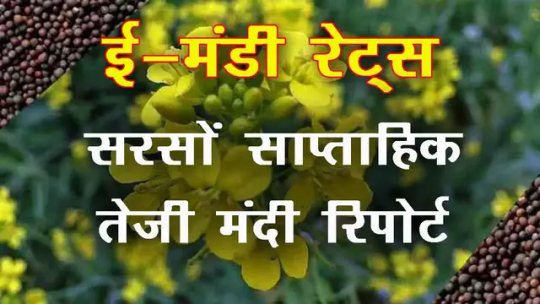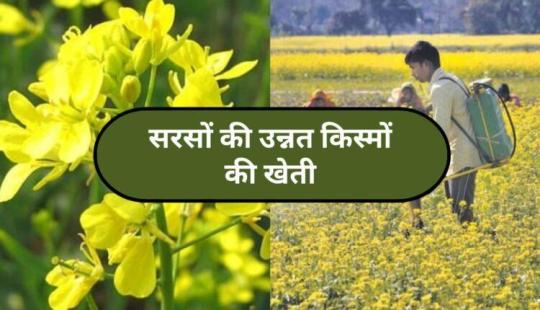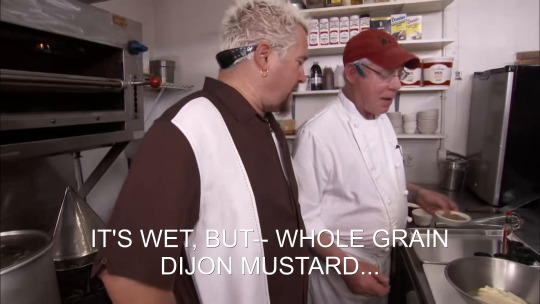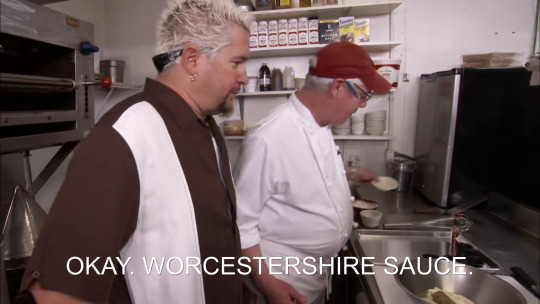#mustard farming
Text
Sarso Teji Mandi Report 6 May: बीते हफ्ते सरसों की क्या रही स्थिति? देखें साप्ताहिक तेजी-मंदी रिपोर्ट
सरसों साप्ताहिक रिपोर्ट 6 मई 2024 : पिछला सप्ताह सुरुवात सोमवार जयपुर सरसों नयी 5375 रुपये पर खुला था। ओर शनिवार शाम 5325 रुपये पर बंद हुआ। पिछले सप्ताह के दौरान सरसो में मांग न रहने से -50 रुपए प्रति क्विंटल की गिरावट दर्ज हुआ, सप्ताह के शुरुआत में आयी गिरावट को कवर कर सरसो लगभग स्थिर बंद हुआ।
Sarso Teji Mandi Report 6 May
जयपुर सरसों 5350 के अपने सपोर्ट के करीब आने के बाद हल्की बढ़त के चलते…

View On WordPress
0 notes
Text
Mustard Farming in Arid Lands: Drought-Resistant Solutions
Mustard cultivation involves growing crops for their seeds, oil, and leaves. Mustard seeds are used to extract oil or as a spice, while mustard greens are edible vegetables.
Mustard farming
Mustard cultivation involves growing crops for their seeds, oil and leaves. Mustard seeds are used to extract oil or as a spice, while mustard greens are edible vegetables. It is a versatile crop that grows in many climates and is renowned for its oil, spicy taste, and …

View On WordPress
0 notes
Text
सरसों की खेती (Mustard Farming): उचित पैदावार के लिए सरसों की उन्नत किस्म और रोग नियंत्रण पर ख़ास ध्यान दें
जानिए क्या है सरसों की खेती की तकनीक और कैसे होगी ज़्यादा कमाई?
सरसों की खेती की उन्नत तकनीकें अपनायी जाएँ तो किसान अच्छी आमदनी अर्जित कर सकते हैं। कीटों और बीमारियों से रबी की तिलहनी फसलों को सालाना 15-20 प्रतिशत तक नुकसान पहुँचाता है। कभी-कभार ये कीट उग्र रूप धारण कर लेते हैं तथा फसलों को अत्याधिक हानि पहुँचाते हैं। इसीलिए सरसों या तिलहनी फसलों को कीटों और बीमारियों से बचाना बेहद ज़रूरी है।

सरसों की खेती (Mustard Farming): सरसों रबी में उगाई जाने वाली प्रमुख तिलहन फसल है। इसकी खेती सिंचित और असिंचित यानी बारानी खेतों में संरक्षित नमी के ज़रिये की जाती है। देश के सरसों उत्पादन में राजस्थान का प्रमुख स्थान है। पश्चिमी क्षेत्र के राज्यों का देश के कुल सरसों उत्पादन में 29 प्रतिशत योगदान है। सरसों की औसत उपज काफ़ी कम यानी महज 7 क्विंटल प्रति हेक्टेयर है।
अगर सरसों की खेती की उन्नत तकनीकें अपनायी जाएँ तो औसत पैदावार 18-20 क्विंटल प्रति हेक्टेयर यानी दो से ढाई गुना ज़्यादा मिल जाती है। ये भी माना गया है कि असिंचित क्षेत्रों में सरसों की पैदावार 20 से 25 क्विंटल तक तथा सिंचित क्षेत्रों में 25 से 30 क्विंटल प्रति हेक्टेयर तक प्राप्त हो जाती है।
क्या है सरसों की खेती की उन्नत तकनीक?
एक ही खेत में लगातार सरसों की फसल नहीं उगाना चाहिए।
कीट प्रबन्धन: सरसों की खेती में कीटों का प्रकोप पूरे देश में पाया जाता है। सरसों की पैदावार को घटाने में कीटों की बड़ी भूमिका होती है। मेरठ स्थित सरदार वल्लभभाई पटेल कृषि प्रौद्योगिकी विश्वविद्यालय के विशेषज्ञों के अनुसार, कीटों और बीमारियों से रबी की तिलहनी फसलों को सालाना 15-20 प्रतिशत तक नुकसान पहुँचाता है। इससे किसान बहुत हतोत्साहित होते हैं। बेमौसम की बारिश से बढ़ने वाली नमी और धूप के कमी की वजह से सरसों की फसल में लगने वाले कीट तेज़ी से फैलते हैं। कभी-कभार ये कीट उग्र रूप धारण कर लेते हैं तथा फसलों को अत्याधिक हानि पहुँचाते हैं। इसीलिए सरसों या तिलहनी फसलों को कीटों और बीमारियों से बचाना बेहद ज़रूरी है।
फसल चक्र: खरपतवार के टिकाऊ उपचार में फसल चक्र अपनाने से बहुत फ़ायदा होता है। फसल चक्र का अधिक पैदावार प्राप्त करने, मिट्टी का उपजाऊपन बनाये रखने तथा बीमारियों और कीट से रोकथाम में भी महत्वपूर्ण योगदान होता है। मूँग-सरसों, ग्वार-सरसों, बाजरा-सरसों जैसे एक वर्षीय फसल चक्र तथा बाजरा-सरसों-मूँग/ग्वार-सरसों का दो वर्षीय फसल चक्र में उपयोग करना बेहद लाभकारी साबित होता है। बारानी इलाकों में जहाँ सिर्फ़ रबी में फसल ली जाती हो वहाँ सरसों के बाद चना उगाया जा सकता है।
सरसों की खेती के लिए उन्नत किस्मों का ही इस्तेमाल करना चाहिए क्योंकि इसकी रोग प्रतिरोधक क्षमता और उत्पादकता बेहतर होती है।
सरसों की खेती के साथ यदि किसान उन सावधानियों का ध्यान रखें जिससे उनके खेत में ही अगली फसल के लिए उन्नत किस्म के बीजों की पैदावार हो सके तो ये तरीका और फ़ायदेमन्द साबित होता है।

बीज उत्पादन
प्रगतिशील किसान कुछ सावधानियाँ रखकर सरसों का बीज अपने खेतों में ही पैदा कर सकते हैं। बीज उत्पादन के लिए ऐसी भूमि का चुनाव करना चाहिए, जिसमें पिछले साल सरसों की खेती नहीं की गयी हो। यहाँ तक कि खेत के चारों ओर 200 से 300 मीटर की दूरी तक सरसों की फसल नहीं होनी चाहिए। सरसों की खेती के लिए प्रमुख कृषि क्रियाएँ, फसल सुरक्षा, अवांछनीय पौधों को निकालना तथा उचित समय पर कटाई की जानी चाहिए।
फसल की कटाई के वक़्त खेत को चारों ओर से 10 मीटर क्षेत्र छोड़ते हुए बीज के लिए लाटा काटकर अलग से सुखाना चाहिए तथा दाना निकालकर उसे साफ़ करके ग्रेडिंग करना चाहिए। दाने में नमी 8-9 प्रतिशत से अधिक नहीं होनी चाहिए। बीज को कीट और कवकनाशी से उपचारित कर लोहे के ड्रम या अच्छी किस्म के बोरों में भरकर सुरक्षित जगह पर भंडारित करना चाहिए। ऐसे बीज को किसान अगले साल बुआई के लिए इस्तेमाल कर सकते हैं।
और पढ़ें.....
#agriculture news in hindi#farming news in hindi#kheti kaise kare#kheti se kamai#mustard crops#mustard farming#sarso ki kheti in hindi
0 notes
Text
जीएम सरसों पर प्रतिबंध से भारतीय किसानों को नुकसान सुप्रीम कोर्ट को विचारधारा के ऊपर विज्ञान को चुनना चाहिए | Indian farmers suffer from the GM mustard ban. The Supreme Court must favour science over dogma;

Source: theleaflet.in
पिछले दो दशकों से जीएम तकनीक पर पूर्ण प्रतिबंध लगाने पर जोर
सुप्रीम कोर्ट ने जीएम सरसों की रिहाई की मांग वाली अर्जी को स्वीकार करते हुए किसान संघ शेतकरी संगठन से पूछा, 'आप इतने साल कहां थे?'
जैसा कि सुप्रीम कोर्ट एक ऐसे मामले पर विचार-विमर्श कर रहा है जो भारत में आनुवंशिक रूप से संशोधित सरसों के भाग्य का निर्धारण कर सकता है, एक किसान निकाय भारत की शीर्ष अदालत में अपनी आवाज सुनने का प्रयास कर रहा है।
महाराष्ट्र स्थित किसान संघ, शेतकरी संगठन, सामाजिक रूप से संशोधित (जीएम) सरसों पर प्रतिबंध लगाने की मांग करने वाली कार्यकर्ता अरुणा रोड्रिग्स द्वारा दायर याचिका का विरोध कर रहा है। बीटी कपास के साथ अपने अनुभव के आधार पर, किसानों का तर्क है कि जीएम सरसों में खाद्य उत्पादन बढ़ाने और उनकी आजीविका में सुधार करने की क्षमता है।
भले ही उनके आवेदन को 17 नवंबर 2022 को रिकॉर्ड में ले लिया गया, लेकिन यह निराशाजनक है कि जिन किसानों की खेल में सबसे अधिक चमड़ी है, उन्हें अब तक सुप्रीम कोर्ट द्वारा नहीं सुना गया है।
जीएम सरसों की रिहाई की वकालत करने वाले आवेदन को स्वीकार करते हुए पीठ ने पूछा, 'आप इतने सालों में कहां थे?' यह सवाल जीएम की रिहाई के लिए और उसके खिलाफ लड़ने वालों के बीच संसाधनों और शक्ति में असमानता को ध्यान में रखने में विफल रहता है। सरसों।
कार्यकर्ता, अदालत का दरवाजा खटखटाने और अपना मामला बनाने के साधनों के साथ, पिछले दो दशकों से जीएम तकनीक पर पूर्ण प्रतिबंध लगाने पर जोर दे रहे हैं। इस बीच, जिन किसानों को बहुत अधिक लाभ होने वाला है, वे रोजी-रोटी कमाने के दैनिक संघर्ष में व्यस्त हैं। क्या प्रौद्योगिकी के उपयोग के माध्यम से एक बेहतर जीवन चुनने का किसान का अधिकार संसाधनों की कमी और कानूनी रास्ते तक पहुंच से बाधित होना चाहिए?
जीएम फसलों पर प्रतिबंध
पिछले 18 वर्षों से जीएम फसलों का व्यावसायिक उपयोग अधर में लटका हुआ है। 2002 में व्यावसायिक खेती के लिए पहली बार पेश किए जाने के बाद से ही ये फसलें भारत में बहस का एक विवादास्पद विषय रही हैं। अरुणा रोड्रिग्स और अन्य के साथ एक गैर सरकारी संगठन जीन कैंपेन ने 2004 में जीएम जीवों के उपयोग को चुनौती देते हुए एक जनहित याचिका दायर की थी। जीएम सरसों इनका ताजा शिकार है।
भारतीय वैज्ञानिकों द्वारा विकसित, जीएम सरसों में कृषि में क्रांति लाने और किसानों की आजीविका में सुधार करने की क्षमता है। हालांकि, कार्यकर्ताओं ने दावा किया है कि यह पर्यावरण और मानव स्वास्थ्य के लिए खतरा है। दूसरी ओर, किसानों का तर्क है कि प्रतिबंध कृषिविदों के लिए एक बड़ा झटका है और उन्हें अन्य देशों के किसानों की तुलना में नुकसान में डाल देगा जो पहले से ही जीएम तकनीक का उपयोग कर रहे हैं।
आजीविका में सुधार के अलावा, किसानों का मानना है कि जीएम तकनीक उन्हें बदलती जलवायु परिस्थितियों के अनुकूल बनाने, टिकाऊ कृषि को बढ़ावा देने और खाद्य सुरक्षा बढ़ाने में मदद कर सकती है। संगठन ने अपने आवेदन में शीर्ष अदालत से किसानों और कृषि उद्योग के लिए जीएम सरसों के लाभों पर विचार करने का आग्रह किया है। इस तरह की तकनीकों पर प्रतिबंध किसानों को और नुकसान पहुंचाएगा, खासकर भारत के शुष्क क्षेत्रों में, जहां पारंपरिक खेती के तरीके अपर्याप्त साबित हुए हैं। संगठन ने इस बात पर जोर दिया कि याचिकाकर्ताओं के अप्रमाणित और अंधविश्वासी विश्वासों के कारण किसानों को प्रौद्योगिकी का उपयोग करने से नहीं रोका जाना चाहिए। जीएम फसलें पैदावार बढ़ा सकती हैं और उत्पादन लागत कम कर सकती हैं, जिससे अधिक मुनाफा हो सकता है।......
#gm mustard#genetically#genetic genealogy#supreme court#GM mustard ban#indian farmers#indian farming#mustard farming
0 notes
Text
राजस्थान में इस रबी सीजन में बढ़ेगा सरसों का रकबा! किसानों को बांटे जाएंगे 14 लाख किलो से अधिक बीज
राजस्थान में इस रबी सीजन में बढ़ेगा सरसों का रकबा! किसानों को बांटे जाएंगे 14 लाख किलो से अधिक बीज
राजस्थान सरकार ने प्रदेश के 30 जिलों में सरसों के बीज मिनीकीट बांटने का फैसला लिया है. जिसके तहत 3 लाख हेक्टेयर में बुवाई का लक्ष्य निर्धारित किया गया है.
राजस्थान सरकार सरसों की 9 किस्मों के बीजों का फ्री वितरण करेगी.
Image Credit source: File Photo
खरीफ सीजन अपने पीक पर है. जिसके तहत खरीफ सीजन की मुख्य फसलें पक कर तैयार होने लगी हैं. इसी के साथ ही रबी सीजन की तैयारियां भी शुरू हो गई हैं.…

View On WordPress
0 notes
Text










We got a big nom-colored box filled with noms as big as me! But how do I get to the CHOMPable parts? 🎁🧀🌭👀🐢
#sausage#cheese#gift box#boop#Kirby#tortoise#Russian tortoise#Inspector Kirby#Hickory Farms#Kirby sits on things#red#mustard#GRUMP#cute#animals
10 notes
·
View notes
Text


Farm of mustard
2 notes
·
View notes
Text





[NOW WE'RE GONNA MAKE DAUFUSKIE SAUCE. DAUFUSKIE SAUCE. SOME MAYONNAISE... FOOD LUBE, AS I LIKE TO CALL IT. AND LESS A PERSON THAN A COLLECTION OF TERRIBLE TRAITS? IT'S WET, BUT-- WHOLE GRAIN DIJON MUSTARD... OKAY. WORCESTERSHIRE SAUCE.]
#s09e08 farm to table#guy fieri#guyfieri#diners drive-ins and dives#whole grain dijon mustard#daufuskie sauce#some mayonnaise#food lube#terrible traits#worcestershire sauce#gonna#person#collection#okay
8 notes
·
View notes
Text
Mustard Facts: Mustard Seeds!
Original Post: Friday, January 31, 2014
What makes mustard, mustard? Other than the variety of vinegars, wines, and other liquids that are present in mustards, it's all in the mustard seeds.
There's three main kinds of mustard seeds - black (strongest flavor), brown, and white (weakest). Yellow mustard is usually made of white seeds, with the darkness of the seed increasing with the strength of the mustard. The grinding of the seeds releases the flavor of the seed, and the yellow colour as well.
These three main mustard seeds discussed here originate from the Eurasian region, black more specifically from the Middle East. Interestingly, white mustard - Sinapis alba - is in a different family than black and brown mustards - Brassica junecea and Brassica nigra - which makes it even more unique as a weaker mustard. The more you know.
Mustard seed can also be used as a medicinal plant, as it has antibacterial properties. In fact, it has shown to treat rheumatism, including rheumatism arthritis. Mustard just keeps getting better and better, doesn't it?
A final, very surprising fact is that snowy Canada produces a whopping 43% (2005) of all mustard seed, followed by Nepal at 15% and a pack of other cold Eurasian countries. And here's me, thinking that mustard was a warm climate plant! But no, Canada is king of mustard. Now I know where I'm gonna live.
#mustard#mustard facts#knowledge#cottagecore#foraging#gardening#farming#cooking#spices#seeds#hard yellow#hy
2 notes
·
View notes
Text

Betta fish Copper Mustard Gas Hawk Rosetail OHM
#top quality betta fish#high quality betta fish#nice betta thailand#betta fish for sale#premium betta fish#betta fish#betta fish farm#betta fish care#betta fish for sale near me#siamese fighting fish#Copper betta fish#Mustard betta fish
0 notes
Video
youtube
Triplet Papa Mile Siridevi Se | Wo Bhi Gaon Me | Missed Vlog - December'23
#youtube#Tanu And The Triplets Vlogs#Triplets Vlog#Triplet Family Vlog#Family Vlog#Vlog Like FlyingBeast#Tanu And The Triplets#Triplet Dad#Village Adventure#Indian Village#Vlog#Rural Life#Farm Life#Wheat Farming#Brinjal Rows#Mustard Fields#Corn Plantation#Morning Sunshine#Precious Moments#Cattle Farming#Hilarious Cow Names#Goat Babies
0 notes
Photo

Chicken Wild Rice Soup I
A slight modification of a recipe that I was given by another Minnesota farm wife. A tasty soup that freezes well and is simple to prepare in a slow cooker. 1 finely chopped onion, 1/2 teaspoon mustard powder, 3 tablespoons dry sherry, 1 pound boneless skinless chicken breasts cooked and cubed, 1/2 teaspoon ground black pepper, 3/4 cup all-purpose flour, 1/2 cup chopped celery, 1/2 cup sliced carrots, 1/2 teaspoon salt, 2 cups cooked wild rice, 1/2 teaspoon curry powder, 1 cup slivered almonds, 1/2 teaspoon dried parsley, 1/2 pound fresh sliced mushrooms, 2 cups half-and-half, 6 cups chicken broth, 1/2 cup butter
0 notes
Text
Quality Assurance in Mustard Honey Exports: The Crucial Role of Organic Standards
Introduction
In the arena of honey exports, the golden elixir referred to as organic mustard honey has been gaining enormous popularity for its precise taste profile and fitness advantages. As the demand for natural products continues to surge globally, exporters of mustard honey discover themselves navigating a panorama of stringent standards and certifications. In this blog post, we delve into the importance of adhering to organic requirements in making sure the quality of exported mustard honey, shedding light on the pivotal role that fine guarantee plays in this burgeoning enterprise.

The Rise of Organic Mustard Honey
Organic mustard honey has emerged as a beacon in the realm of herbal sweeteners, fascinating the palates of clients who seek not only the most effective deliciousness but also health-conscious choices. The journey starts off in apiaries, in which bees collect nectar from organically cultivated mustard flowers, making sure the honey is free of artificial insecticides and chemicals. The natural nature of mustard honey sets it apart, offering a golden possibility for exporters to cater to the ever-developing call for health-centric and environmentally sustainable merchandise.
Understanding Organic Standards
At the heart of first-rate assurance in mustard honey exports lies a dedication to natural standards. These standards are a set of guidelines and hints installed via certification bodies to make certain that the complete procedure, from cultivation to packaging, adheres to strict natural principles. Organic certification entails rigorous inspections and audits, making sure that the honey meets precise criteria regarding soil fitness, beekeeping practices, and the absence of artificial components.
Why Organic Standards Matter
1. Purity and Authenticity:
Organic requirements act as a shield, assuring purchasers that the mustard honey they purchase is pure and authentic. By adhering to those standards, exporters maintain the integrity of their products, building trust with discerning customers who prioritize natural and untainted meal selections.
2. Environmental Stewardship:
Mustard honey exporters play an important role in promoting environmental sustainability. Organic standards mandate eco-friendly farming practices, minimizing the impact on ecosystems and fostering biodiversity. Exporters dedicated to those standards contribute to a more healthy planet and resonate with environmentally conscious consumers.
3. Health Benefits:
The natural certification of mustard honey underscores its fitness blessings. Free from synthetic pesticides and genetically modified organisms (GMOs), organic mustard honey retains its natural dietary profile, supplying antioxidants, enzymes, and other fitness-selling compounds. For customers seeking healthy options, adherence to natural standards is a decisive factor.
4. Market Access and Credibility:
Exporting natural mustard honey opens doors to top-tier markets where discerning purchasers actively seek products with organic certifications. Meeting those standards complements the credibility of exporters, positioning them as responsible participants in the organic motion. This, in turn, enables marketplace access and establishes a competitive facet within the global honey exchange.
The certification process
Obtaining organic certification for mustard honey exports requires a complete system that spans the entire delivery chain. Exporters must adhere to the following key steps:
1. Organic Farming Practices:
The journey starts off within the mustard fields, where natural farming practices are employed. These practices include abstaining from artificial insecticides, herbicides, and fertilizers and, as an alternative, utilizing herbal options to improve soil fertility and crop fitness.
2. Beekeeping Standards:
Apiaries need to meet particular criteria for beekeeping practices. This includes providing bees with access to organic forage, making sure hive situations promote the well-being of the colony, and refraining from the use of antibiotics or artificial treatments.
3. Record Keeping:
Rigorous document-keeping is a crucial part of the certification process. Exporters need to maintain precise facts about cultivation practices, hive control, and honey processing strategies. These statistics serve as proof in the course of certification audits.
4. Inspections and Audits:
Certification: Our bodies conduct everyday inspections and audits to verify compliance with natural requirements. These on-web page reviews examine every factor of the production system, ensuring that the mustard honey meets the defined standards for organic certification.
5. Packaging and Labeling:
Even the packaging and labeling of organic mustard honey are difficult to scrutinize. Labels ought to accurately reflect the organic nature of the product, and packaging substances should align with sustainability principles.
Challenges and Solutions
While the pursuit of organic certification is commendable, exporters might also come across challenges along the way. Common hurdles include the transition period to natural farming, the fee for certification, and the need for schooling. However, these demanding situations can be addressed through authorities help, collaborative initiatives, and funding for sustainable practices. The lengthy-term advantages of organic certification outweigh the preliminary challenges, providing exporters with an aggressive advantage within the international marketplace.
The Global Impact of Organic Mustard Honey Exports
Organic mustard honey exports make a contribution not only to the economic growth of exporting countries but additionally to the well-being of customers worldwide. The international impact extends beyond pleasing the candy enamel; it encompasses environmental conservation, sustainable agriculture, and the promotion of a healthier lifestyle.
1. Economic Growth:
Nations with a thriving mustard honey export enterprise enjoy economic booms and task creation. The call for natural merchandise fosters opportunities for farmers, beekeepers, and exporters, creating a positive financial ripple effect.
2. Environmental Conservation:
The adherence to natural requirements in mustard honey production aligns with worldwide efforts toward environmental conservation. By selling biodiversity, reducing chemical inputs, and supporting sustainable practices, exporters make contributions to the protection of herbal ecosystems.
3. Consumer Awareness:
Organic mustard honey exports play a pivotal role in elevating consumer awareness about the blessings of organic agriculture. As clients turn out to be more aware of their food alternatives, the demand for natural merchandise, together with honey, continues to strengthen.
4. Health and Wellness:
The global export of natural mustard honey without delay impacts the fitness and health of clients. As a natural sweetener with inherent health advantages, mustard honey becomes a favored choice for those seeking nutritious and healthy alternatives to refined sugars.
Conclusion
In conclusion, the first-class guarantee of mustard honey exports hinges on the unwavering commitment to organic requirements. Exporters who include these standards not only make certain of the purity and authenticity of their products but also make a contribution to the broader goals of environmental sustainability, consumer health, and monetary prosperity. As the call for organic merchandise keeps to rise, mustard honey exporters find themselves not just members of a trade but stewards of a movement toward a more fit and extra sustainable destiny.
#honey#honey mustard#dijon mustard#mustard honey exporters#organic honey#raw honey#pure honey#farm fresh honey
0 notes
Photo

Chicken Wild Rice Soup I
A slight variation on a recipe I received from a fellow Minnesota farm wife. A delicious soup that can also easily be cooked in a slow cooker and freezes well.
0 notes
Text
Wood Press Mustard Oil
SPS Naturals Wooden Kolhu Cold Press Black Mustard Oil
#mustard oil#cold pressed oil#wood pressed oil#Kolhu oil#Black mustard oil#healthy eating#healthy diet#healthy#healthy living#nutrition#exercise#health and wellness#health#food#natural farming#natural foods
1 note
·
View note